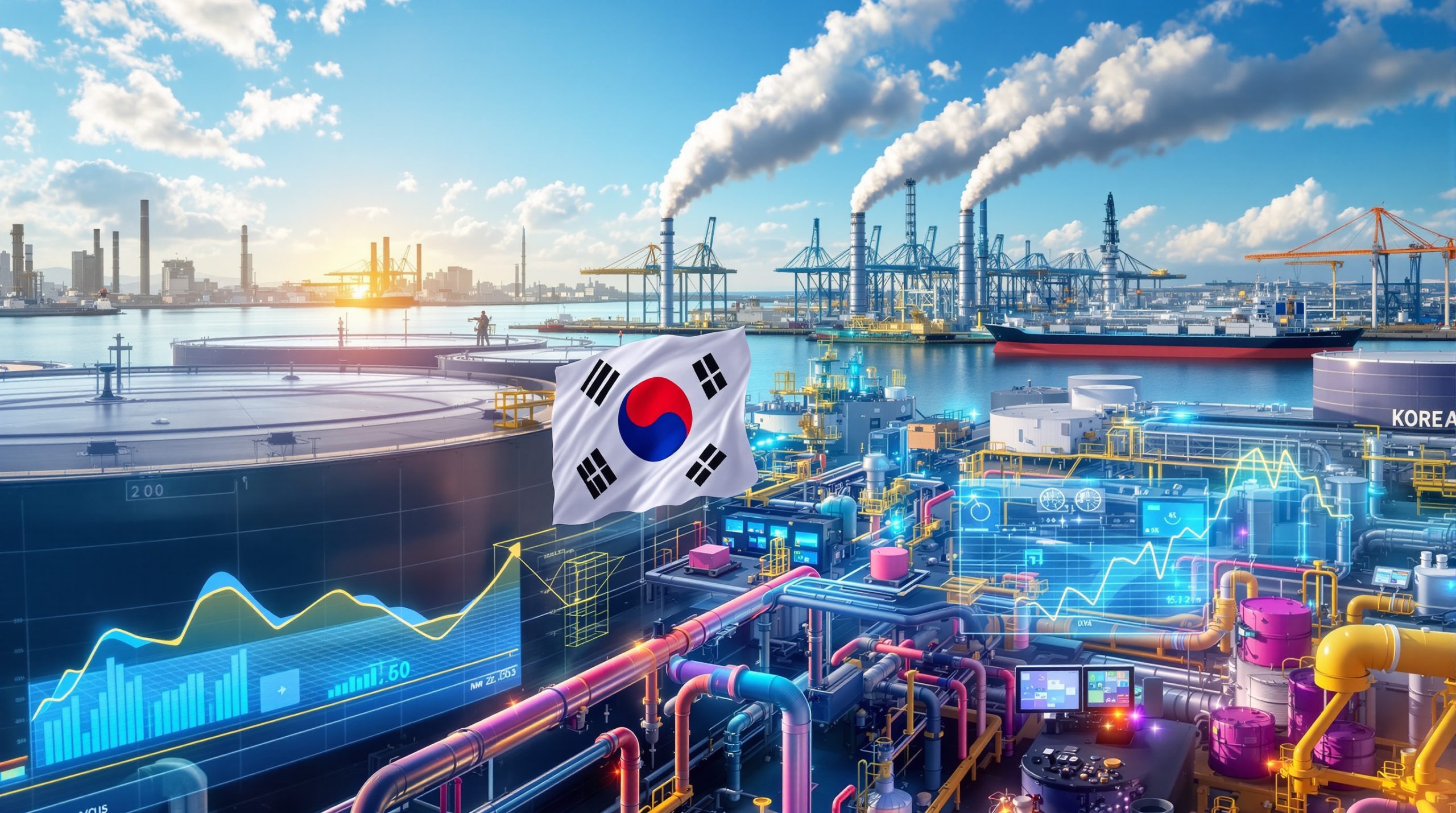Why Are Lithium Prices Bottoming Out?
The lithium market is experiencing a fundamental economic imbalance that industry experts suggest could signal a price floor. Current lithium prices may not be sustainable, as they have declined to levels that make numerous mining operations economically unviable, creating an unsustainable market dynamic that typically precedes correction.
"The current lithium price exhibits obvious bottoming characteristics, with the costs of multiple projects unable to support the current lithium price level," stated Ganfeng Lithium during their June 26, 2025 investor conference. This assessment from one of the world's largest lithium producers carries significant weight in understanding market dynamics.
The Cost-Price Disconnect in Lithium Production
A critical examination of production economics reveals that many lithium projects now operate at negative margins. Hard-rock mining operations (particularly those with lower-grade spodumene deposits) are especially vulnerable, with average production costs ranging between $6,000-9,000 per metric ton of lithium carbonate equivalent (LCE). With market prices hovering below these thresholds, these operations face difficult decisions.
The cost disparity varies significantly by production method:
- Brine operations: Generally lower operating costs ($4,000-6,000/mt LCE) but require larger capital investments and longer development timelines
- Hard-rock mining: Higher operating costs but faster development cycles
- Clay deposits: Emerging technology with promising economics but limited commercial scale
The persistence of below-cost pricing threatens the industry's ability to sustain current output levels, let alone expand to meet future demand. Furthermore, the Thacker Pass mine details demonstrate how even major projects face economic challenges under current market conditions.
Economic Warning Signs from Industry Leaders
Major producers have begun issuing explicit warnings about market sustainability. Ganfeng Lithium's assessment that "multiple projects cannot support the current lithium price level" represents a significant market signal. As an industry leader with operations spanning the globe, Ganfeng's perspective offers valuable insight into real production economics across diverse geographies and extraction methods.
Industry cost curve analysis demonstrates that approximately 25-30% of global lithium production capacity now operates with negative cash flows. This economic reality cannot persist indefinitely without triggering supply adjustments that would ultimately support price recovery.
"When prices fall below the marginal cost of production for extended periods, supply rationalization becomes inevitable. The lithium market appears to be approaching this inflection point." – Polaris ESS Network market analysis
What Happens If Current Lithium Prices Persist?
The continuation of current pricing levels would trigger a series of market adjustments with significant implications for the industry's structure and future supply availability. These adjustments would likely unfold in predictable phases, beginning with operational optimization and potentially culminating in substantial market consolidation.
Potential Market Consolidation
If lithium prices remain depressed, industry consolidation becomes increasingly probable. Lower-cost producers with strong balance sheets would gain opportunity to acquire distressed assets at favorable valuations, potentially accelerating concentration among a smaller number of global players.
This consolidation pattern would follow historical precedent seen in other commodity markets facing similar price compression, such as:
- Acquisition of higher-cost operations by well-capitalized industry leaders
- Strategic partnerships to share infrastructure and processing capabilities
- Vertical integration between miners and processors to capture margin throughout the value chain
- Regional consolidation to achieve operational synergies
The result would be a more concentrated industry landscape dominated by producers with access to the lowest-cost resources and most efficient processing capabilities. In particular, companies with Australia lithium tax breaks may gain competitive advantages that accelerate this consolidation process.
Delayed Capacity Expansion
According to Ganfeng Lithium, "If the current lithium price persists, some capacity may exit, and the release of new capacity will also decrease." This assessment highlights a critical second-order effect: the deferral or cancellation of planned expansion projects.
The lithium project pipeline has already shown signs of hesitation:
- Major Australian spodumene projects have announced development delays
- Brine expansion projects in South America face extended timelines
- Exploration budgets have contracted significantly across the industry
- Capital raising for new lithium ventures has become increasingly challenging
A sustained period of below-cost pricing would amplify these trends, potentially removing significant future supply from the market just as demand from battery manufacturers continues its upward trajectory.
Supply-Demand Rebalancing Timeline
Market rebalancing would likely follow a multi-phase process:
- Short-term (6-12 months): Inventory drawdown and operational optimization
- Medium-term (12-24 months): Production curtailments at highest-cost operations
- Long-term (24+ months): Delayed project commissioning creating potential supply shortfalls
This rebalancing process could be accelerated by continued robust demand growth from the electric vehicle sector, which remains on a strong upward trajectory despite economic headwinds in certain markets.
How Are Major Producers Responding to Market Conditions?
Leading lithium producers are navigating the challenging market environment through strategic adaptations focused on cost control, selective project advancement, and increased vertical integration. These strategies aim to enhance resilience through the current pricing cycle while positioning for advantage when market conditions improve.
Ganfeng Lithium's Strategic Adaptations
Despite challenging market conditions, Ganfeng Lithium continues to advance its global production portfolio through a carefully calibrated approach. The company's project development strategy showcases how leading producers are maintaining long-term expansion plans while adapting to near-term market realities.
Key projects in Ganfeng's portfolio demonstrate their continued commitment to capacity growth:
| Project | Location | Status | 2025 Significance |
|---|---|---|---|
| Goulamina | Mali | Stable production ramp-up | Increasing spodumene supply |
| Cauchari-Olaroz | Argentina | Smooth progression | 25,400 mt LCE production (largest in Argentina) |
| Mariana | Argentina | Production commenced February 2025 | Expanding brine-based production |
Notably, the Cauchari-Olaroz operation achieved production of 25,400 metric tons of lithium carbonate equivalent (LCE) in 2024, establishing it as Argentina's largest lithium production facility. This achievement demonstrates Ganfeng's ability to successfully bring major projects online despite challenging market conditions.
The February 2025 production commencement at the Mariana project further illustrates Ganfeng's commitment to strategic growth in key lithium-producing regions, with the latest Argentina brine insights highlighting the country's emerging importance in the global lithium landscape.
Vertical Integration as a Resilience Strategy
A defining feature of Ganfeng's market response has been accelerated vertical integration. The company projects that their self-sufficiency rate will exceed 50% in 2025, providing substantial insulation against market volatility and supply chain disruptions.
This vertical integration strategy delivers several competitive advantages:
- Cost optimization: Control across the value chain enables margin capture at multiple stages
- Supply security: Reduced dependence on external raw material sources
- Quality control: Enhanced ability to manage specifications across production processes
- Market intelligence: Deeper insights into supply-demand dynamics at various value chain stages
While requiring significant capital investment, this approach provides strategic flexibility that pure-play miners or processors lack. The ability to redirect material flows between internal and external channels allows vertically integrated producers to optimize operations as market conditions evolve.
What Factors Will Determine Future Lithium Price Trends?
The trajectory of lithium prices will be determined by the interplay of several critical factors, including production economics, demand growth rates, and supply response mechanisms. Understanding these dynamics provides insight into potential price inflection points and market rebalancing timelines.
Cost Curve Analysis
Industry cost curves reveal that current lithium prices may not be sustainable as they sit below the sustainable production costs for approximately 25-30% of global lithium operations. This positioning creates natural price support as higher-cost producers either reduce output or exit the market entirely.
Production costs vary significantly by extraction method and resource quality:
- Brine operations: $4,000-6,000/mt LCE (lower operating costs but higher capital intensity)
- Hard-rock mining: $6,000-9,000/mt LCE (higher operating costs but faster development)
- Clay deposits: $7,000-10,000/mt LCE (emerging technology with limited commercial validation)
These cost structures create natural price floors, as sustained operation below these thresholds becomes economically irrational for significant portions of global supply.
"The industry cost curve, combined with future demand growth trends, suggests current price levels cannot be sustained indefinitely without triggering supply disruptions." – Polaris ESS Network analysis
Demand Growth Trajectory
The medium to long-term demand outlook remains robust despite near-term market challenges. Multiple growth drivers support continued lithium consumption expansion:
- Electric vehicle adoption: Global EV sales continue to grow at 25-30% annually
- Energy storage systems: Grid-scale installations increasing at 35%+ compound annual growth rate
- Consumer electronics: Steady 5-7% growth with increasing battery capacity per device
- Emerging applications: Aerospace, military, and specialized industrial uses creating new demand channels
Collectively, these demand sources are projected to drive lithium consumption growth of 20-25% annually through 2030, requiring substantial new supply development to maintain market balance. According to recent analysis, this demand growth will likely collide with constrained supply additions by 2025.
Supply Response Mechanisms
The lithium market will likely respond to current conditions through a combination of mechanisms:
- Production curtailments: Highest-cost operations reducing output or entering care and maintenance
- Project delays: Extension of development timelines for planned capacity additions
- Resource allocation shifting: Companies prioritizing highest-margin operations
- Strategic stockpiling: Battery manufacturers securing future supply through long-term agreements
These adjustments would gradually rebalance the market, potentially leading to price recovery as demand growth continues to outpace constrained supply additions.
How Will the Lithium Supply Landscape Evolve?
The global lithium supply landscape is undergoing significant transformation that will reshape producer economics, competitive dynamics, and regional influence. These changes will have lasting implications for supply security, pricing, and industry structure.
Geographic Diversification of Production
The global lithium supply base continues to expand beyond traditional sources, with several regions gaining prominence:
- Argentina: Emerging as a major brine-based production hub, with Ganfeng's Cauchari-Olaroz (25,400 mt LCE in 2024) and Mariana project (production commenced February 2025) highlighting the country's growing importance
- Mali and broader Africa: Resources such as the Goulamina project demonstrating the continent's potential as a significant hard-rock lithium source
- Australia: Maintaining its position as the world's largest hard-rock lithium producer despite cost pressures
- North America: Strategic projects advancing toward production, supported by policy incentives and supply security concerns
This geographic diversification reduces concentration risk that historically centered production in the "Lithium Triangle" (Chile, Argentina, Bolivia) and Australia. However, it also introduces new considerations regarding geopolitical stability, infrastructure development, and regulatory frameworks.
Technology and Process Innovation
Producers are accelerating innovation in extraction and processing technologies to reduce costs and improve recovery rates. These advancements have potential to significantly alter the industry cost curve over time.
Key technological developments include:
- Direct lithium extraction (DLE): Emerging technologies promising higher recovery rates and reduced environmental footprint for brine resources
- Improved conversion processes: Enhanced methods for converting spodumene concentrate to battery-grade chemicals
- Recovery optimization: Increased yields from existing operations through process refinements
- By-product recovery: Extraction of additional value from magnesium, boron, and other elements present in lithium-bearing resources
These innovations may eventually reduce the cost advantage currently held by established brine operations, creating a more uniform global cost curve and potentially enabling development of previously uneconomic resources. Novel approaches like geothermal lithium extraction could also transform the industry's environmental profile and economics.
Environmental and Social Governance Considerations
Sustainable production practices are increasingly influencing project development and market access. These considerations add complexity to the supply response but also create opportunities for differentiation.
Critical ESG factors affecting lithium supply include:
- Water usage: Particularly significant for brine operations in water-stressed regions
- Carbon footprint: Growing importance for battery manufacturers seeking low-carbon supply chains
- Indigenous rights: Ensuring proper consultation and benefit-sharing with local communities
- Land disturbance: Minimizing impact footprint, particularly for hard-rock operations
Projects demonstrating superior ESG performance may gain preferential access to certain markets and potentially command price premiums as battery manufacturers seek to improve the sustainability profile of their supply chains.
What Should Investors Watch for in the Lithium Market?
Investors navigating the lithium market should monitor several key indicators that signal potential inflection points in the supply-demand balance and pricing trajectory. These metrics provide valuable insight into market direction and timing.
Key Market Indicators
Several quantitative and qualitative indicators offer valuable signals for market participants:
- Inventory levels: Monitored throughout the supply chain, with particular attention to Chinese conversion facilities and battery precursor producers
- Capacity utilization rates: Percentage of installed capacity actively producing, with declining rates often preceding price stabilization
- Project development milestone announcements: Delays or accelerations in major projects affecting future supply availability
- Contract pricing trends: Evolution of terms in long-term supply agreements between producers and consumers
- Policy developments: Changes to subsidy programs, procurement requirements, or permitting processes in key markets
These indicators collectively provide early warning of potential market turning points, allowing strategic positioning ahead of broader recognition of changing fundamentals.
Potential Catalysts for Price Recovery
Several potential developments could trigger accelerated market rebalancing and price recovery:
- Production curtailments: Announcements of output reductions or mine closures from major producers
- EV policy incentives: New or expanded government programs supporting electric vehicle adoption
- Battery technology developments: Chemistries requiring higher lithium content per kilowatt-hour
- Supply chain disruptions: Water availability issues, labor disputes, or regulatory interventions affecting major producing regions
- Strategic stockpiling: Government or corporate initiatives to secure long-term supply
These catalysts could rapidly alter market sentiment and accelerate the timeline for price normalization, particularly if multiple factors converge simultaneously. Developments like India's new battery-grade refinery India could also impact regional supply-demand balances.
Long-term Strategic Positioning
Companies with specific operational characteristics are likely to emerge stronger from the current market downturn:
- Vertical integration: Controlling multiple stages of the value chain provides margin flexibility and operational optimization opportunities
- Low-cost resource position: Access to high-grade or easily processed resources creates fundamental competitive advantage
- Processing technology: Proprietary or advanced conversion capabilities enabling premium product specifications
- Customer relationships: Established supply arrangements with tier-one battery manufacturers providing volume stability
These attributes enable sustained operation through challenging market conditions while positioning for expanded market share as higher-cost competitors struggle with margin compression.
FAQ: Understanding the Lithium Market Outlook
Is the current lithium price decline temporary or structural?
The current price decline reflects both cyclical factors (temporary supply-demand imbalances) and structural elements (industry maturation). The fundamental demand growth trajectory remains strong, suggesting the current lithium prices may not be sustainable over the medium term.
Cyclical elements include:
- Inventory accumulation throughout the supply chain during 2023-2024
- Timing mismatches between new supply additions and demand growth
- Economic headwinds temporarily affecting electric vehicle sales growth in certain markets
Structural changes include:
- Industry maturation with more diverse supply sources
- Improved pricing transparency and liquidity
- Evolution from contract-dominated to more spot-market influence
- Development of more sophisticated risk management instruments
These factors suggest potential for continued volatility while maintaining a positive long-term fundamental outlook.
How do different lithium production methods compare economically?
Production economics vary significantly between extraction methods:
Brine operations typically offer:
- Lower operating costs ($4,000-6,000/mt LCE)
- Higher capital requirements ($15,000-20,000/mt of annual capacity)
- Longer development timelines (5-7 years from discovery to production)
- Greater sensitivity to lithium concentration and impurity profiles
- Location constraints tied to specific geological formations
Hard-rock mining generally provides:
- Higher operating costs ($6,000-9,000/mt LCE)
- Lower capital intensity ($12,000-15,000/mt of annual capacity)
- Shorter development timelines (3-5 years)
- More flexible processing options
- Greater geographic distribution of resources
These characteristics create different risk-reward profiles and responsiveness to market conditions, with brine operations typically providing greater margin resilience during pricing downturns but requiring more patient capital.
What role will recycling play in future lithium supply?
Lithium recycling is expected to become increasingly significant as the first generation of EV batteries reaches end-of-life. However, meaningful volumes from recycling are still several years away from materially impacting primary production requirements.
Key considerations for recyc
Ready to Spot the Next Major Mining Discovery?
Stay ahead of the market with Discovery Alert's proprietary Discovery IQ model, which instantly identifies significant ASX mineral discoveries and transforms complex data into actionable investment insights. Explore why historic discoveries can generate substantial returns by visiting Discovery Alert's dedicated discoveries page and begin your 30-day free trial today.




